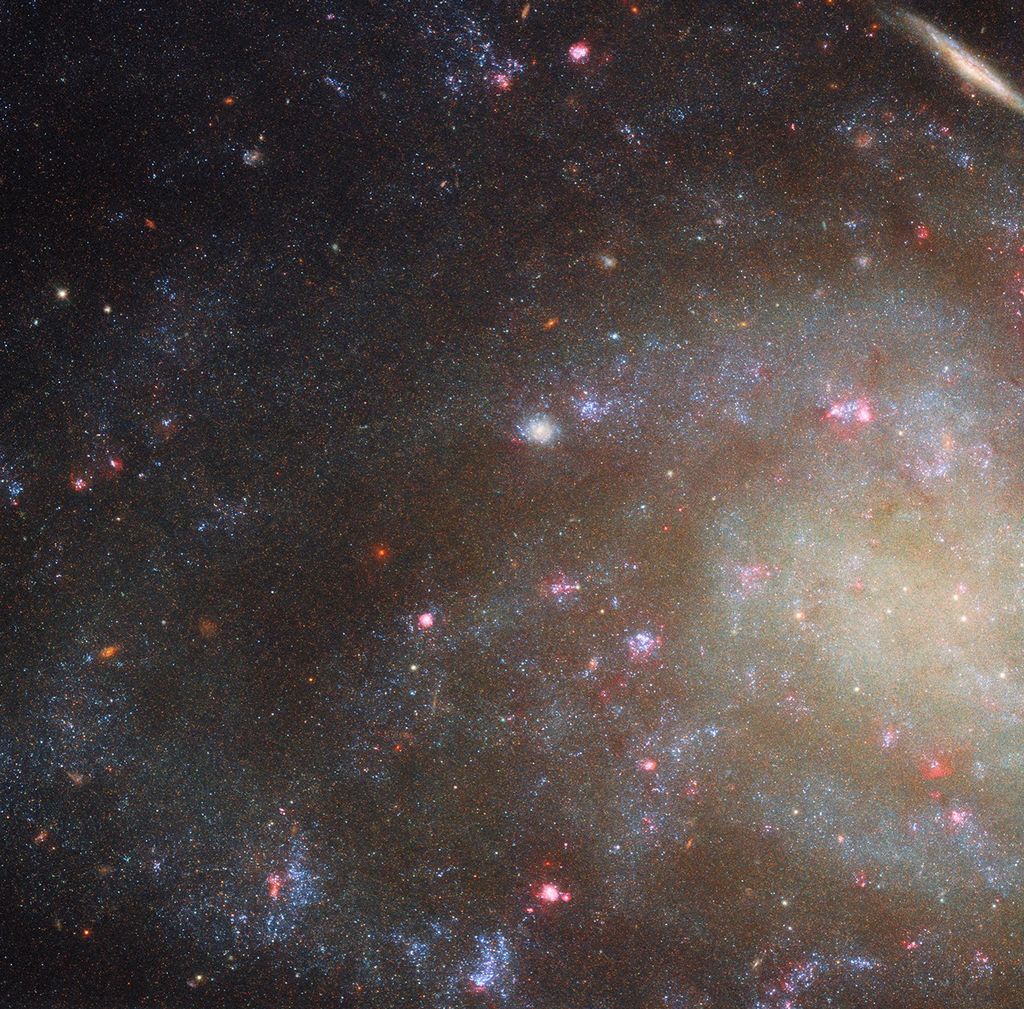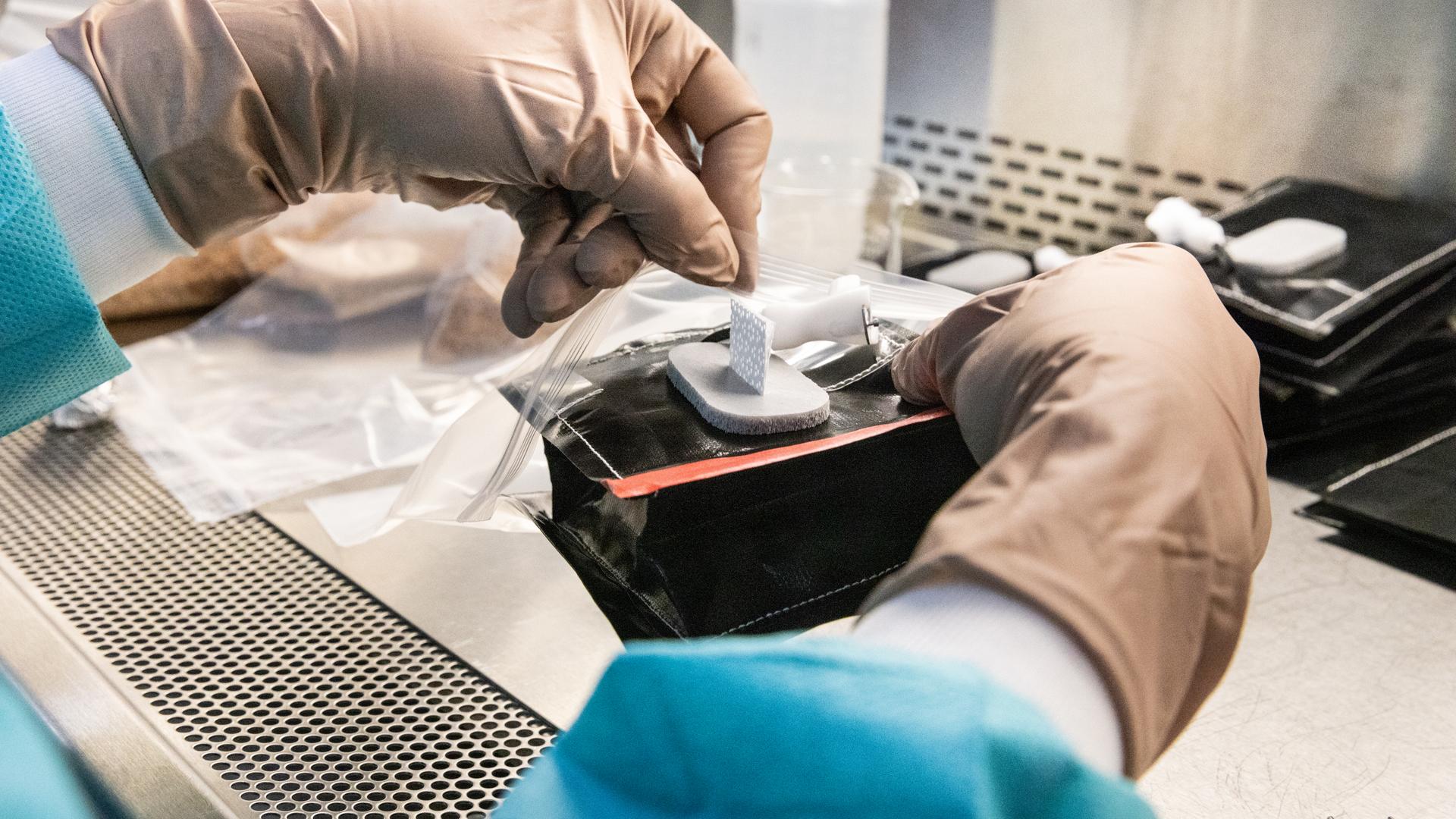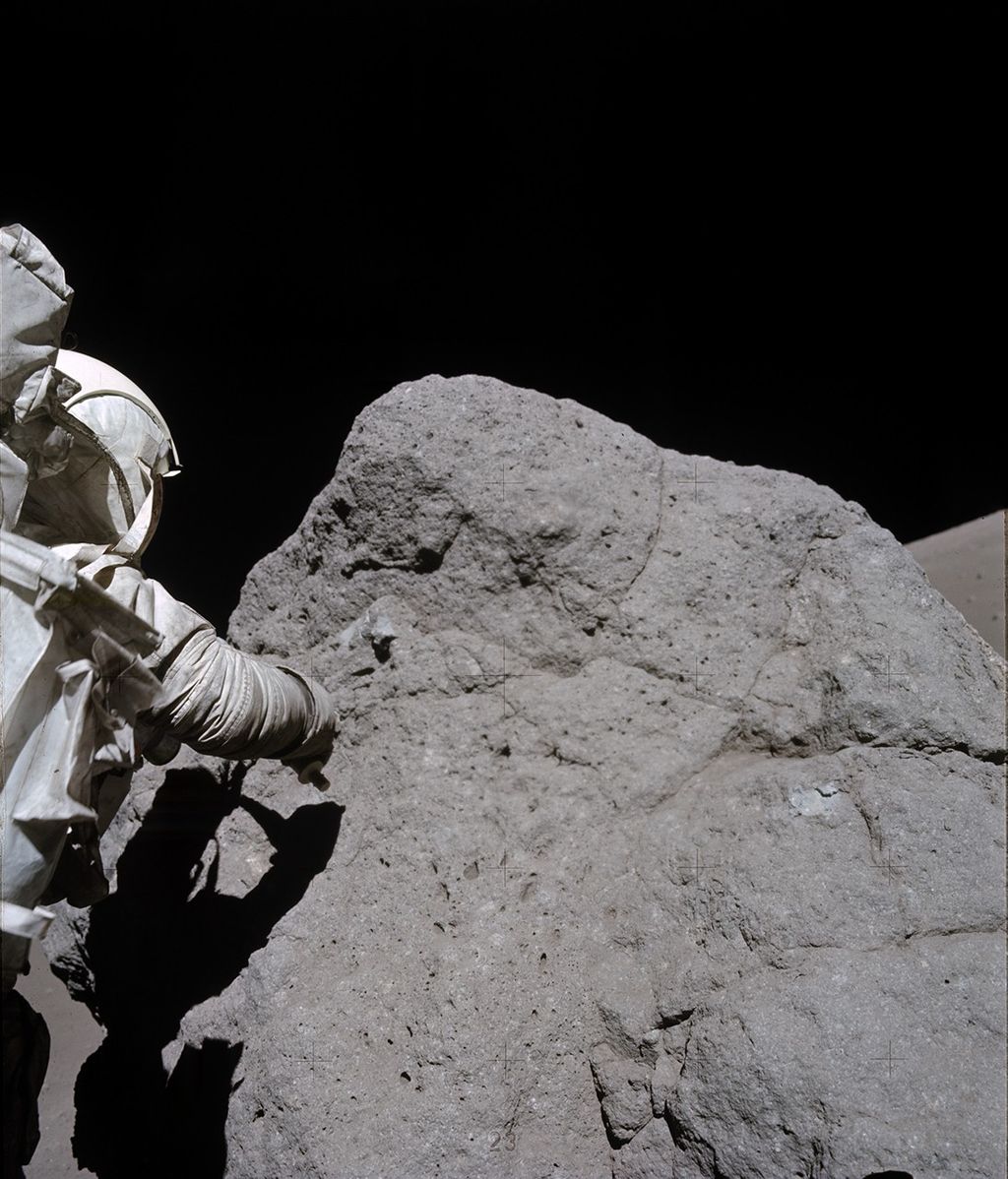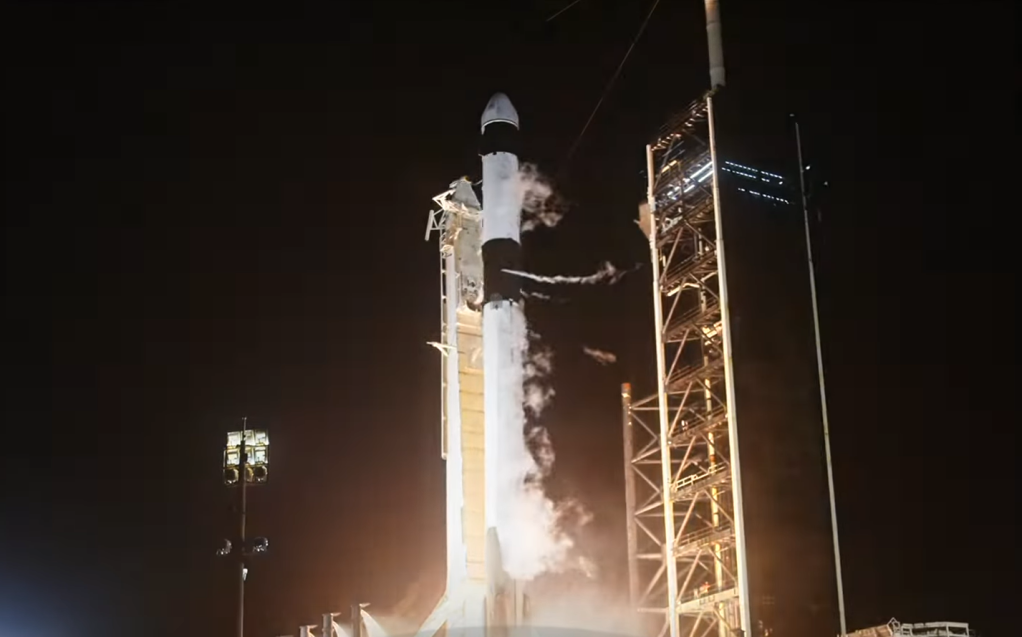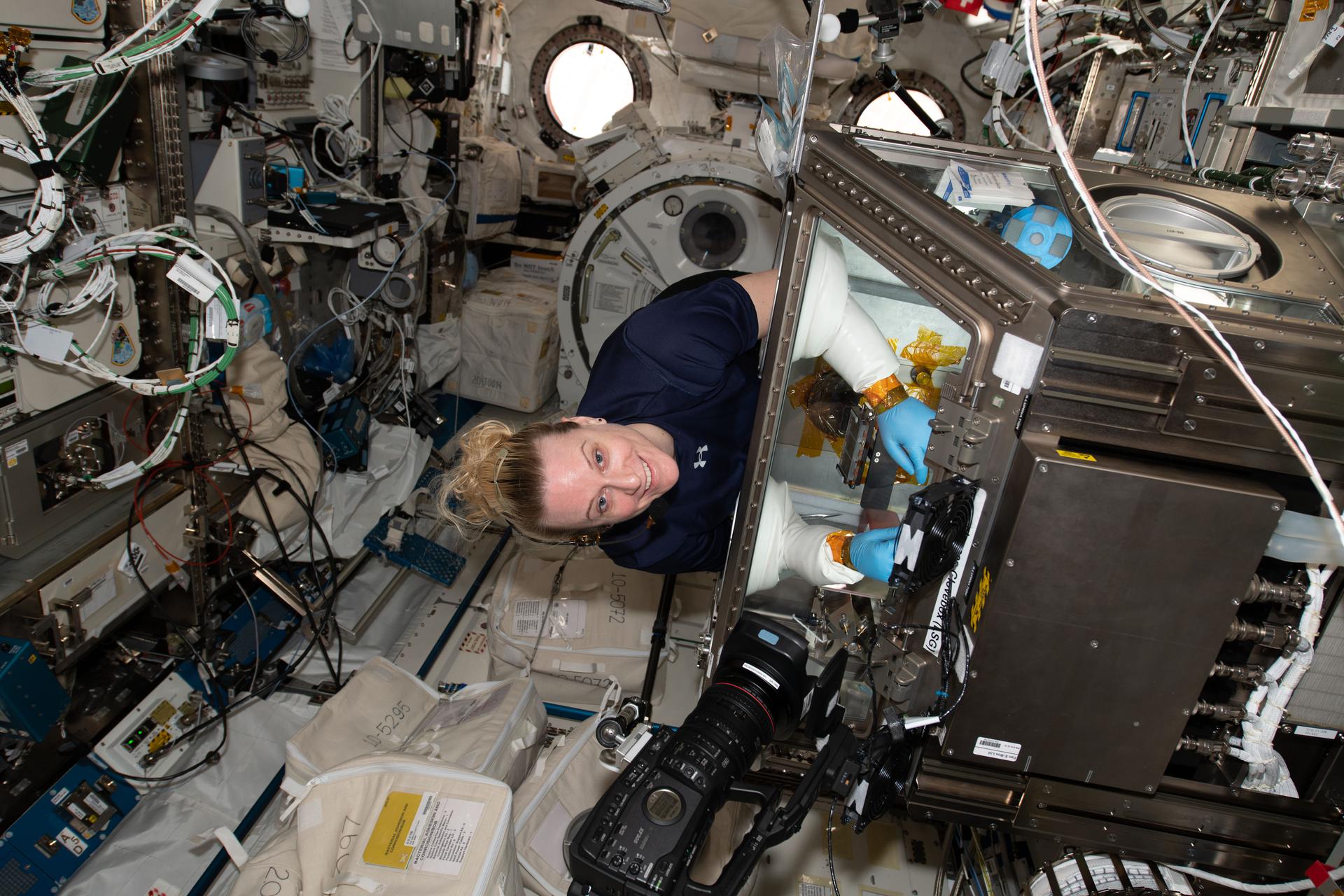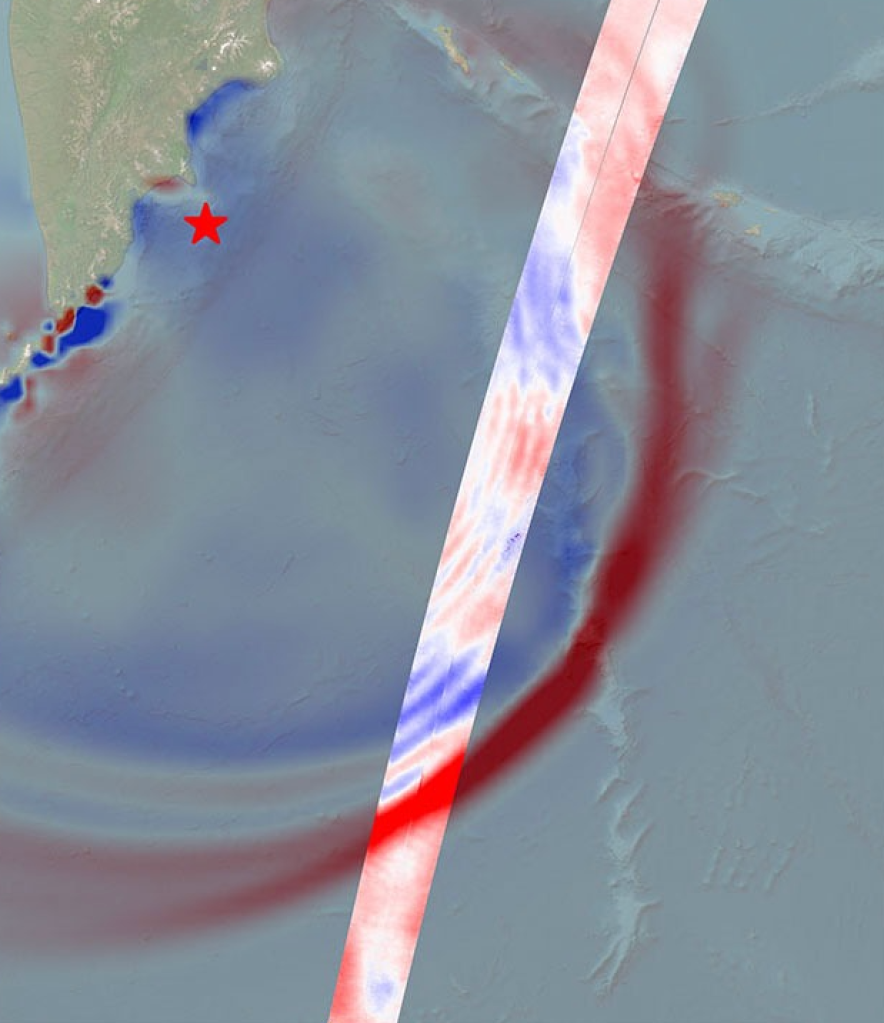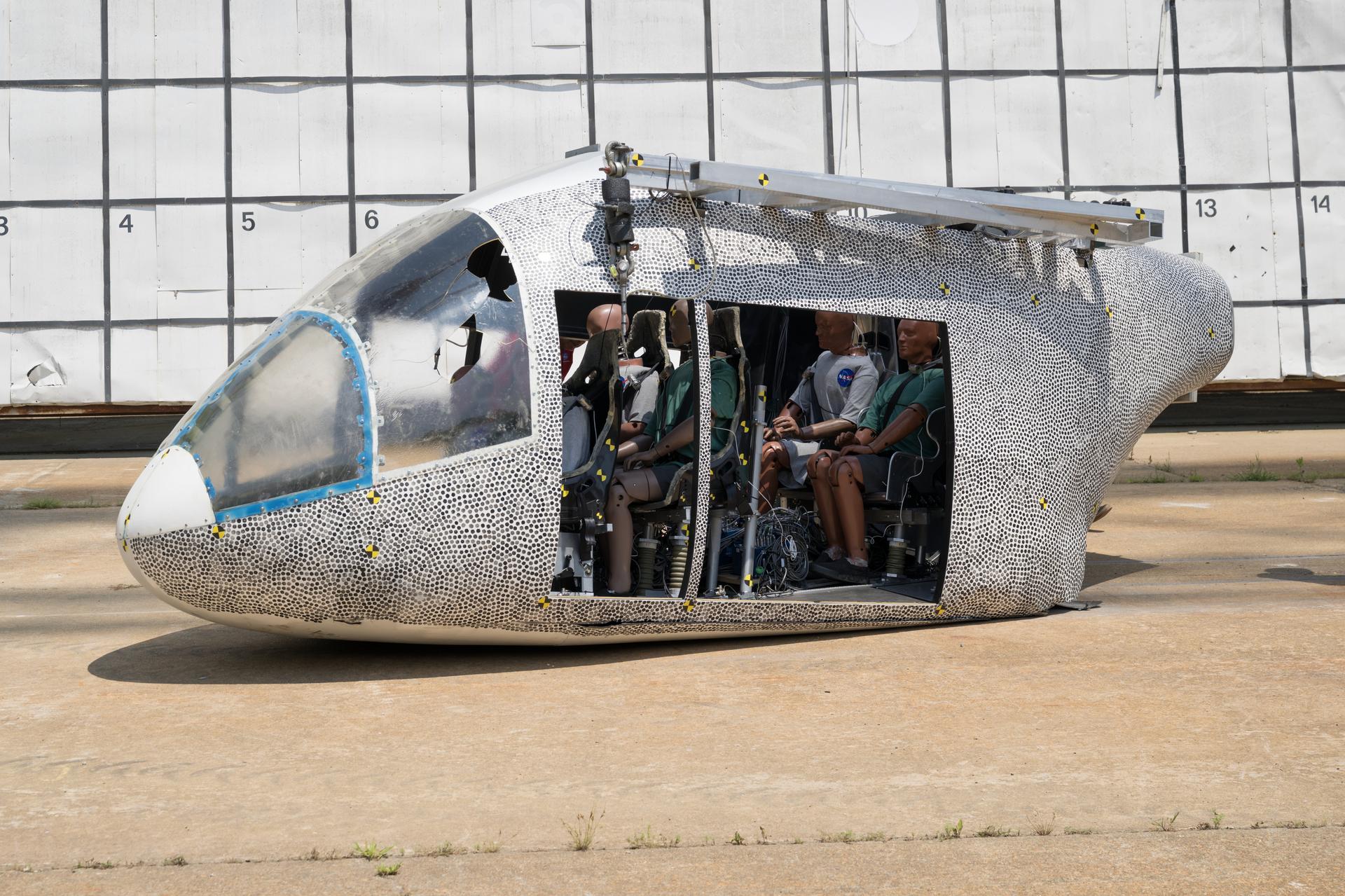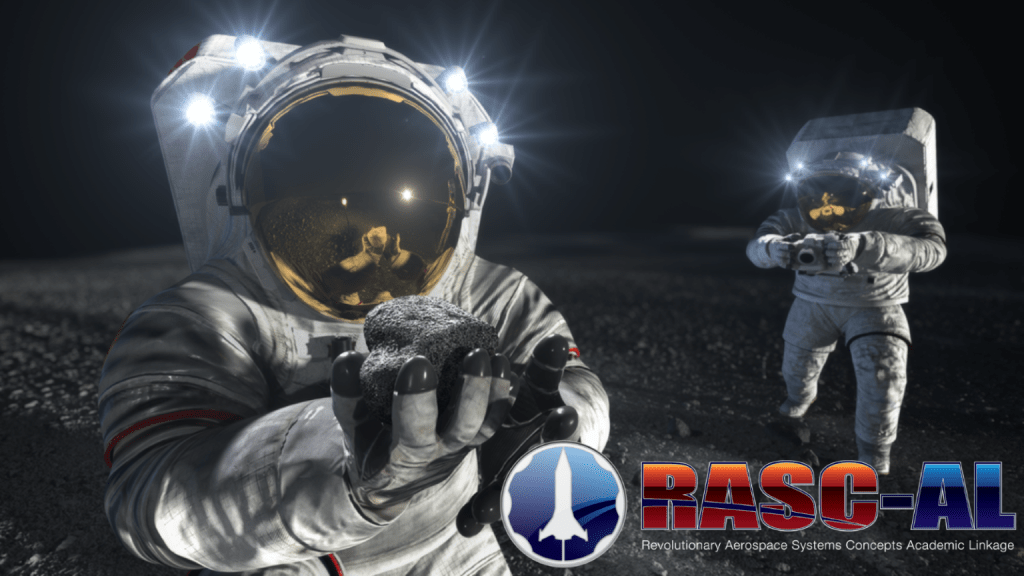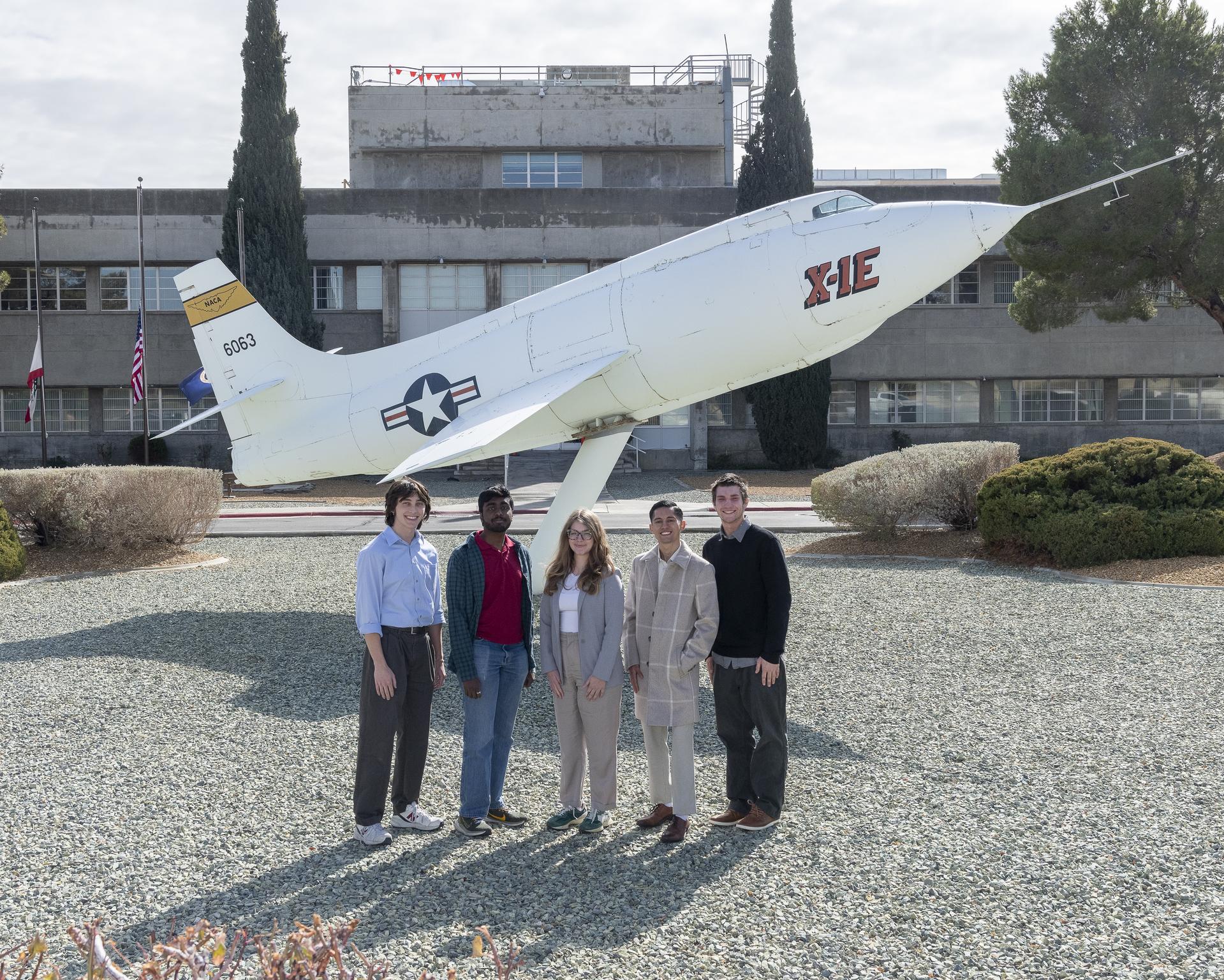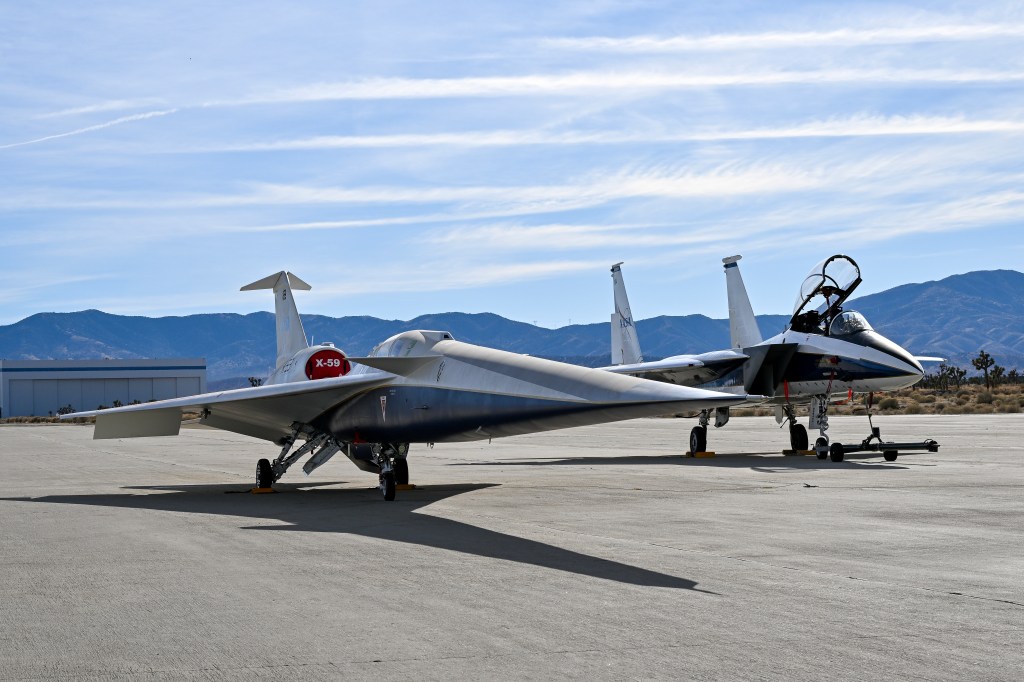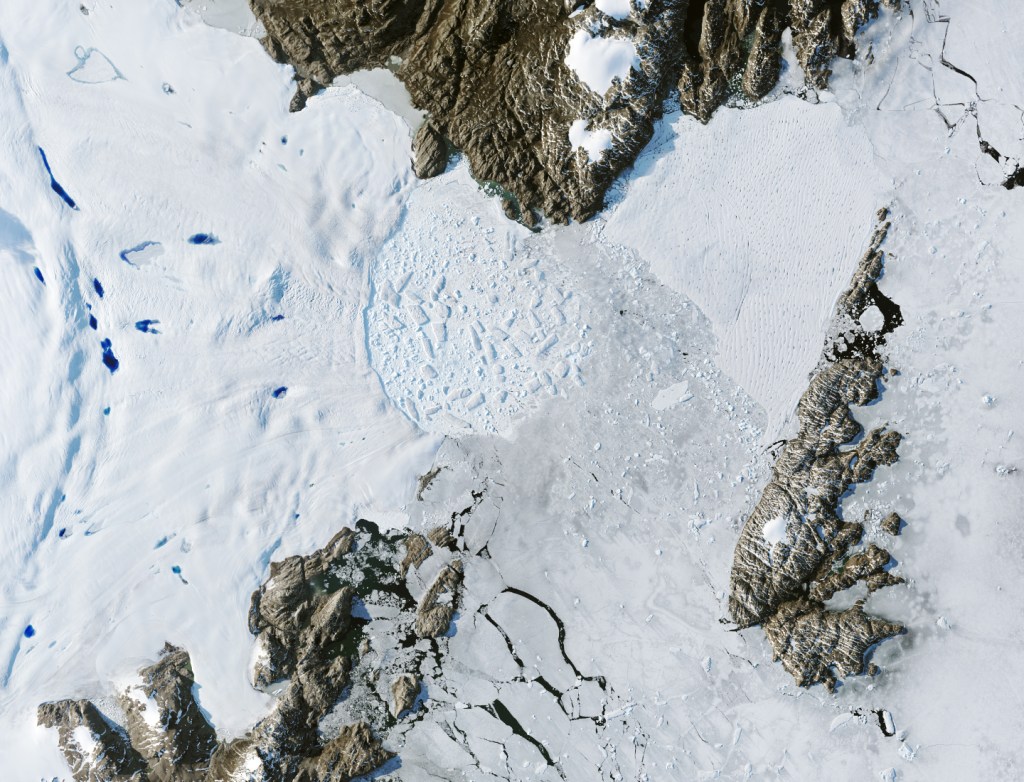
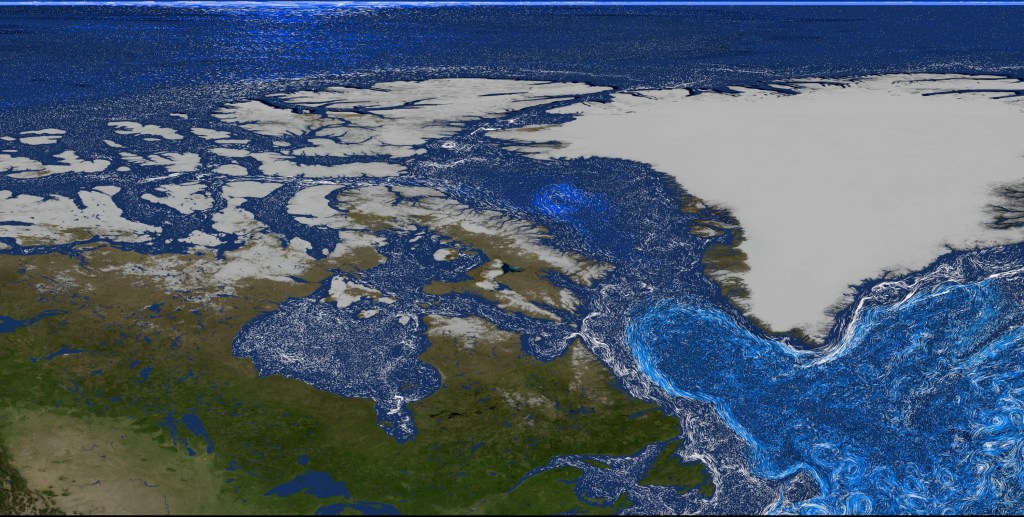
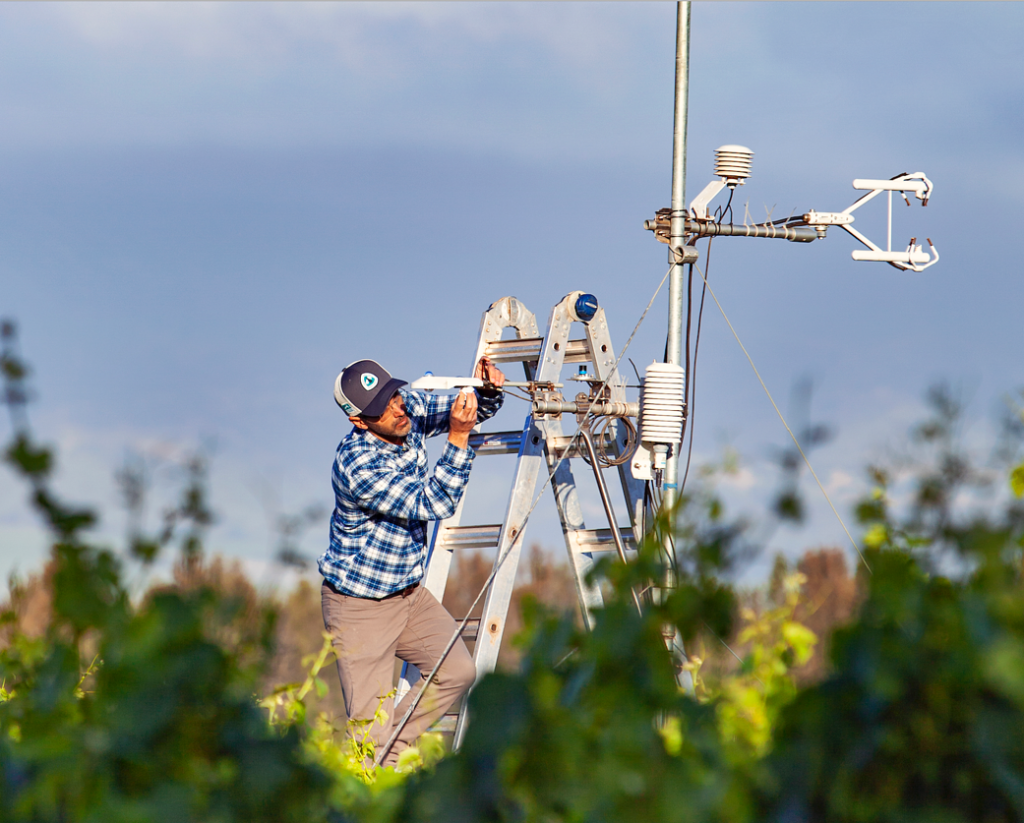
2025 Ames Earth Science Highlights
January 2025
| January 15 |
| The NASA Ecological Conservation Program-funded project FATE, The drifting Fish Aggregating device TrajEctory modeling tool for marine protected area management, and the TROPIC-SWOT teams continue to deploy satellite-tracked surface drifters from the pristine Palmyra Atoll in the remote equatorial Pacific. |
| NASA Earth Exchange researchers published “NASA Earth Exchange Downscaled Climate Projections 30 Arcseconds CMIP6” in Nature’s Scientific Data. |
| January 22 |
| AJ Purdy was a contributing author on an article published in NATURE WATER entitled “Global estimates of the storage and transit time of water through vegetation”. https://www.nature.com/articles/s44221-024-00365-9 |
| The Earth Science Project Office’s (ESPO) Roy Johnson (PM) and Andrian Liem (deputy PM), are currently in Perth, Australia with the SCIFLI team, prepared and ready to support the imaging of SpaceX Starship Integrated Flight 7. |
| January 29 |
| Matthew Johnson gave an invited oral presentation titled, “Improved assessment of recent trends in NOx and VOC emissions and ozone production sensitivity regimes using satellite data” at the 105th American Meteorological Society (AMS) Annual Meeting on January 14, 2025. |
| Laura Iraci, as the leader of the NASA Climate Adaptation Science Investigators (CASI) Fires and Air Quality workgroup, presented her work entitled “Increasing Western Wildfires Will Affect Air Quality at NASA Centers” at the 105th Annual Meeting of the American Meteorological Society in New Orleans, LA (Jan 12-16, 2025). |
February 2025
| February 5 |
| The division is very excited to welcome two new in-person NASA DEVELOP teams to Ames, both being in-person for the first time since summer 2023. |
| The Ames Airborne Sensor Facility (ASF) is working with AFRC ER-2 management for logistical support of airborne missions, including GLOVE, out of Hangar 4802 at Edwards AFB. |
| February 12 |
| The Ames Earth Science Division hosted a visit from ESD’s Benjamin Phillip, Gerald Bawden, and Kevin Reath, which included a leadership summit with USGS colleagues. |
| The Airborne Sensor Facility’s (ASF) eMAS (Enhanced MODIS Airborne Simulator) instrument is currently deployed for the GSFC-led GLOVE campaign (GSFC Lidar Observation and Validation Experiment). https://science.gsfc.nasa.gov/earth/projects/658 |
| Florian Schwandner, together with ESD’s Ben Phillips, Gerald Bawden, Kevin Reath and Cornell’s Rowena Lohman, led the CORE 2.0 capstone workshop on February 4-5 at NASA Ames. |
| The NASA Ames Meteorological Measurement System (MMS) team (Rajesh Poudyal, Kristen Okorn) is installing the MMS instruments on the JSC WB-57 aircraft at Ellington Field, NASA JSC in Houston, January 30 to February 21, 2025, in support of the joint NOAA-NASA SABRE campaign (Stratospheric Aerosol processes, Budget and Radiative Effects). |
| OWWL, Ozone Where We Live, a NASA Citizen Science Project evaluating air quality in and around California’s San Joaquin Valley, held a kick-off meeting on January 30, with Emma Yates and Laura Iraci from Ames. |
| Taejin Park co-authored a new paper in SCIENCE, Spatial resolution for forest carbon maps. https://www.science.org/doi/10.1126/science.adt6811 |
| February 19 |
| The Airborne Sensor Facility (ASF) at Ames is participating in the Goddard Lidar Observation and Validation Experiment (GLOVE) with the eMAS instrument, currently deployed at AFRC. |
| Staff from Ames (ESPO and the Atmospheric Science Branch) are participating in SABRE with instruments and project management leadership. SABRE (Stratospheric Aerosol Processes, Budget and Radiative Effects), managed by ESPO, is a joint NOAA-NASA campaign. |
| February 26 |
| The Airborne Sensor Facility (ASF) at Ames is participating in the Goddard Lidar Observation and Validation Experiment (GLOVE) with the eMAS instrument, currently deployed at AFRC. |
| PACE-PAX PICARD data: The Ames Airborne Sensor Facility’s PICARD (Pushbroom Imager for Cloud and Aerosol Research and Development) VNIR and SWIR stray light removal implementation based on GLAMR data is completed. |
| During SABRE: Stratospheric Aerosol processes, Budget and Radiative Effects, the WB-57 departed on its second full test flight on Thursday, Feb 20th. |
| The Santa Clara County FireSafe Council announced a new partnership with Ames’ fire scientists, led by Christopher Potter, to analyze regional vegetation for ember cast risk. |
March 2025
| March 5 |
| PICARD (Pushbroom Imager for Cloud and Aerosol Research and Development), the VNIR-SWIR airborne imaging spectrometer built and operated by the Airborne Sensor Facility (ASF) at Ames, showed data from GLAMR (GSFC) and the September 2024 PACE-PAX campaign at the PACE-PAX/PVST/SAT3 Science Team Meeting. |
| The eMAS (Enhanced MODIS Airborne Simulator) instrument has successfully concluded flights on the NASA ER-2 for the GLOVE (GSFC Lidar Observation and Validation Experiment) mission. |
| The Meteorological Measurement System (MMS) team consisting of Rajesh Poudyal and Kristen Okorn completed the fifth and final test flight of SABRE (Enhanced MODIS Airborne Simulator) integration. |
| OpenET launched their new tool, Farm and Ranch Management Support (FARMS), which will make it easier for farmers and ranchers to manage their water resources. |
| March 12 |
| On February 27, 2025, Juan L. Torres-Perez, Sativa Cruz, and Justin Fain hosted/taught the Applied Sciences’ ARSET (Applied Remote Sensing Training) program’s online training titled Calculating Spectral Indices for Land and Aquatic Applications Using QGIS, reaching 912 participants from ~450 unique organizations across 107 countries and 31 US States. |
| The AERACEPT (AErosol Rapid Analysis Combined Entry Probe/sonde Technology) project (PI: Diana Gentry) has successfully completed its wind tunnel test campaign at NASA ARC’s Fluid Mechanics Laboratory. |
| March 19 |
| The Ames Airborne Sensor Facility’s (ASF) MASTER instrument (MODIS/ASTER Airborne Simulator, a modified Daedalus Wildfire scanning imaging spectrometer) is now deployed for FireSense 2025. |
| Richard Kolyer participated in the Skydio X2 UAS (Uncrewed Aerial System) inspection of the east wall of the National Full-Scale Aerodynamics Complex (NFAC) on March 6, 2025. |
| The Scientific Committee on Oceanographic Aircraft Research (SCOAR) was hosted at NASA Ames Research Center between Feb 27-28, 2025, by Liane Guild. |
| Keiko Nomura and Weile Wang attended the NextGen Biodiversity Monitoring for the Amazon workshop March 4–5, 2025, at the Bezos Earth Fund Office in Washington, D.C., which brought together experts from Planet Labs, World Resources Institute (WRI), Cornell Lab of Ornithology, Microsoft AI for Good Lab, Bezos Earth Fund, Google Earth Engine, Smithsonian, Andes Amazon Fund, WildMon, Massachusetts Institute of Technology (MIT), and others. |
| March 26 |
| The Ames Airborne Sensor Facility’s (ASF) MASTER instrument (MODIS/ASTER Airborne Simulator, a modified Daedalus Wildfire scanning imaging spectrometer) continues to fly for FireSense 2025. |
| Kristen Okorn developed an open-source harmonized database of low-cost sensor air quality data. |
| SARP (Student Airborne Research Program): Ames Earth Science Projects Branch members Stephanie Olaya and Joelle Hopkins recently completed student selection for the 2025 SARP program. This was a massive undertaking, as 458 students applied and only 48 were selected (24 students on each coast). |
April 2025
| April 2 |
| Cindy Schmidt retired on March 31, 2025. Cindy has been a hallmark of applied sciences at NASA, and Ames specifically, for over 30 years. |
| Ethan McKinley, the SESCDP candidate, started at Ames Monday March 31 and will stay through August 16, 2025. Ethan is the Superintendent of Channel Islands National Park. |
| The OpenET Farm and Ranch Management Support (FARMS) automated data retrieval and reporting interface was launched online (https://farms.etdata.org) |
| The FireSense project started its Spring 2025 campaign on March 17, 2025, with AVIRIS-3 measurements of active wildfires and prescribed fires in Alabama, Texas, and Florida. |
| April 9 |
| The FireSense project concluded the first phase of its Spring 2025 campaign with simultaneous ground, airborne, and spaceborne data collection at a prescribed fire at Geneva State Forest (GSF) in Alabama from March 26-29, 2025. FireSense, their science collaborators, and the Alabama Forestry Commission (AFC) tightly coordinated simultaneous measurements from five ground sampling teams, an atmospheric modeling team, three uncrewed aircraft, and three crewed aircraft, while supporting burn crews during the prescribed fire. |
| Richard Kolyer operated the ARC ALTA-X UAS during the ACERO TCL-1 Deployment to Salinas, California. ACERO (Advanced Capabilities for Emergency Response Operations Project) is led by ARMD with SMD involvement and coordination. |
| NASA Ames Research Center’s Flight Operations and Earth Science Division will collaborate with Black Swift Technologies LLC to deploy the fixed-wing S2 UAS in Costa Rica May 12-21. The Costa Rica Airborne research on foresT Ecosystem Response to volcanic emissions (CRATER) mission aims to collect airborne RGB and IR imagery, and in-situ gas concentration data over the south-southeastern flank of Rincón de la Vieja, where known volcanic gas seeps occur. |
| The ARC AirSHARP (Airborne asSessment of Hyperspectral Aerosol optical depth and water-leaving Reflectance Product Performance for PACE) team will begin integration of airborne instruments with the Naval Postgraduate School’s (NPS) Twin Otter team the week of April 28 for their second airborne/field campaign (May 5-19, 2025). |
| April 16 |
| Vidal Salazar (Earth Science Projects Office/ESPO), along with EVS-3 IMPACTS PI Lynn McMurdie and Deputy PIs John Yorks and Gerry Heymsfield, presented a briefing of the IMPACTS investigation for KDP-F to the leadership and program management of SMD’s Earth Science Division. |
| Morgan Gilmour published a study “Multi-species telemetry quantifies current and future efficacy of a remote marine protected area” in Global Change Biology. https://onlinelibrary.wiley.com/doi/10.1111/gcb.70138 |
| Emma Yates and the OWWL (“Ozone Where We Live”) team are facilitating connections between the Civil Air Patrol, a non-profit organization serving as the U.S. Air Force’s auxiliary, and NASA’s Disasters Response Coordination System, as requested by both parties. |
| April 23 |
| The Ames Earth Science Division hosted its annual well-attended Earth Science Showcase on 16 April 2025, during the monthly Center Happy Hour. Six tables with multiple interactive displays hosted by our scientists engaged the broader Ames community and guests, including a number of children. |
| DEVELOP Program Ames leads (Lauren Webster and Katie Miller) and Fellow (Maya Hall) presented at the monthly Earth Science Geographic Information Systems (GIS) Collaborative Meeting on Wednesday, April 16, 2025. |
| April 30 |
| The FireSense project concluded the second phase of its Spring 2025 field campaign with simultaneous ground, airborne, and spaceborne data collection on a prescribed fire at Fort Stewart-Hunter Army Airfield in Georgia from April 13 – 20, 2025. |
May 2025
| May 7 |
| Kristen Okorn attended the European Geosciences Union (EGU) General Assembly 2025 and gave a well-received oral presentation in the session, “Low-cost air quality sensors: challenges, opportunities, and collaborative strategies across the world”. |
| Deputy Project Manager Judy Alfter and Ames Earth Science Projects Branch Assistant Branch Chief Erin Czech supported Jack Kaye’s retirement celebration held at the Webb Auditorium at NASA Headquarters. ESPO support of this event was at the request of Barry Lefer, who will be stepping into Kaye’s position as Associate Director for Research for NASA’s Earth Science Division (ESD). |
| Matt Fladeland presented an invited talk at the UND Stratospheric Operations and (SOARS) meeting in Minneapolis. |
| May 14 |
| Vidal Salazar (ESPO) participated in a panel review at NASA HQ May 8-9 as part of the selection process for the INSPYRE science team. |
| The CRATER team (Costa Rica Airborne research on foresT Ecosystem Response to volcanic emissions) led by ARC (Science PI Jay Tomlin, NPP fellow) and supported by LaRC staff and ESPO is deployed in Costa Rica, in coordination and collaboration with the University of Costa Rica (Andres Diaz), OVSICORI (Observatorio Vulcanológico y Sismológico de Costa Rica), Black Swift LLC (Boulder CO), and external partners from Chapman University. The mission deploys the electric propulsion fixed-wing Black Swift S2 small fixed-wing UAS, flying above cold volcanic CO2 gas seeps on the forested flanks of Rincón de la Vieja volcano. |
| May 21 |
| AirSHARP (Airborne asSessment of Hyperspectral Aerosol optical depth and water-leaving Reflectance Product Performance for PACE), under PI Liane Guild (ARC): The May 2025 AirSHARP campaign completed a two-week airborne campaign with radiometric and sun photometry measurements of the sky and ocean surface over the Monterey Bay area, to validate PACE products. |
| CRATER (Costa Rica Airborne research on foresT Ecosystem Response to volcanic emissions): Science PI Jay Tomlin, PM Ric Kolyer, as well as ESPO’s Jhony Zavaleta, Jaden Ta, and Quincy Allison are currently completing the CRATER field campaign in coordination with local academic and volcano observatory partners at Rincón de la Vieja Volcano National Park in Costa Rica. |
| May 28 |
| The California Natural Resources Agency (CNRA) and the California Air Resources Board (CARB) hosted the Kick-Off Meeting of the Wildfire, Ecosystem Resilience, and Risk Assessment Initiative (WERK) in Sacramento on Tuesday, May 13, 2025. |
| The Executive Director of UCNRS (University of California Natural Reserve System, https://ucnrs.org) Steven Monfort, and the UCNRS Director of Strategic Engagement Gary Bucciarelli visited the NASA Earth Exchange (NEX) for a Network Partnership Meeting of the California Sentinel Site Network at Ames on May 20, 2025, hosted by Keiko Nomura. |
June 2025
| June 4 |
| The Costa Rica Airborne research on foresT Ecosystem Response to volcanic emissions (CRATER) mission led by Science PI and Ames NPP Fellow Jay Tomlin has successfully concluded at Rincón de la Vieja volcano (Costa Rica). |
| The Ames Airborne Sensor Facility’s (ASF) MASTER (MODIS/ASTER airborne simulator) is flying science missions for the Geological Earth Mapping Experiment (GEMx) and for the Western Diversity Time Series (WDTS) campaigns. The ASF is managed by James Jacobson under the Airborne Science Program Office at Ames. |
| The summer 2025 OCEANOS (Ocean Community Engagement and Awareness using NASA Observations and Science for Hispanic/Latino Students) Internships started on June 2 with 30 participants (12 high school student, 12 undergraduate students, and six public school teachers). The OCEANOS PI is Juan Torres-Pérez. |
| June 11 |
| NASA Ames center and science leadership (Michael Hesse, Florian Schwandner) visited the San Jose State University’s (SJSU) Moss Landing Marine Laboratory (MLML) near Monterey, CA on June 4, 2025, to explore collaboration opportunities. |
| Jessica McCarty and Justin Fain collected fire location and land management information on agricultural burning from vineyards and orchards in California. |
| June 18 |
| The Ames Airborne Sensor Facility’s (ASF) MASTER (MODIS/ASTER airborne simulator) instrument is flying science missions for the Geological Earth Mapping Experiment (GEMx) and for the Western Diversity Time Series (WDTS) campaigns. |
| Lynn Kennedy (ESPO) and Reem Hannun from Ames hosted the AGAGE-71 (Advanced Global Atmospheric Gases Experiment) Science Team Meeting at EMPA in Dübendorf, Switzerland the week of June 9, 2025. Over 90 scientists from Africa, Asia, Australia, Europe, and North America discussed issues critical to this worldwide atmospheric-monitoring mission. |
| June 25 |
| On June 14 and 15, 2025, PI Emma Yates briefed pilots attending a Bay Area Squadrons Civil Air Patrol (CAP) training event on the OWWL (Ozone Where We Live) Citizen Science project and hand-held sensors. |
| The OCEANOS 2025 Summer Internship is off to an excellent start. OCEANOS (Ocean Community Engagement and Awareness using NASA Observations and Science) under PI Juan Torres-Perez engages student interns in NASA data and technology in an immersive program in coastal ecology. |
| Keiko Nomura and Taejin Park of the NASA Earth Exchange (NEX) at Ames participated in the Biodiversity Monitoring Workshop at UC Davis and Quail Ridge Reserve in Napa, CA (June 9-11, 2025), hosted by the Sentinel Site Network (SSN) for Nature. |
| Students arrived at NASA Wallops Flight Facility (WFF) on June 15, marking the beginning of the 2025 Student Airborne Research Program (SARP). |
July 2025
| July 9 |
| From June 9-18, ESPO’s Judy Alfter and Dan Chirica conducted a site survey visit to Japan for TOKYO-FC (Tokyo Field Campaign), an R&A project managed by ESPO. |
| 4STAR-B (Spectrometers for Sky-Scanning Sun-Tracking Atmospheric Research – B) completed the radiance calibration at the ASF (Airborne Sensor Facility) calibration lab in support for the AirSHARP (Airborne asSessment of Hyperspectral Aerosol optical depth and water-leaving Reflectance Product Performance for PACE) May 2025 campaign. |
| NASA’s DRCS (Disasters Response Coordination System) is currently activated for the Trout and Seven Springs Wildfires in New Mexico. |
| SARP (Student Airborne Research Program) students at Wallops Flight Facility have completed several successful research flights, managed by ESPO. |
| July 16 |
| The 2025 Ocean Community Engagement and Awareness using NASA Observations and Science (OCEANOS) Summer Internship ended on June 27, 2025, with a closeout activity attended by more than 140 people! |
| From June 9-18, ESPO’s Judy Alfter and Dan Chirica conducted a site survey visit to Japan for TOKYO-FC (Tokyo Field Campaign), an R&A project managed by ESPO. |
| 4STAR-B (Spectrometers for Sky-Scanning Sun-Tracking Atmospheric Research – B) completed the radiance calibration at the ASF (Airborne Sensor Facility) calibration lab in support for the AirSHARP (Airborne asSessment of Hyperspectral Aerosol optical depth and water-leaving Reflectance Product Performance for PACE) May 2025 campaign. |
| NASA’s DRCS (Disasters Response Coordination System) is currently activated for the Trout and Seven Springs Wildfires in New Mexico. |
| SARP (Student Airborne Research Program) students at Wallops Flight Facility have completed several successful research flights, managed by ESPO. |

